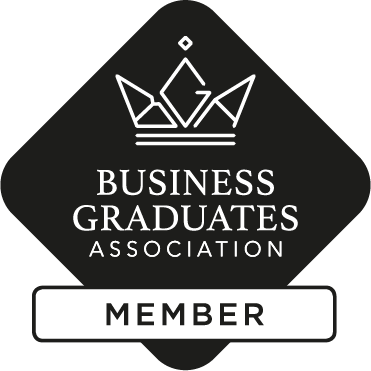University certificate
Scientific endorser

The world's largest faculty of nursing”
Introduction to the Program
Take your career a step further and become a prestigious hospital director with this program that TECH makes available to you"
Managing a team requires communication and leadership skills. Not only to lead the nursing department to perfection, but the entire management of a hospital, understanding in depth the singularities involved in this complex task. Therefore, this complete program is designed with the objective of providing the nurse with the necessary skills to know all the important aspects of planning and organizational theory, understanding the evolution of the health system and all the aspects related to the direction and management of a hospital.

The figure of the hospital director is essential to ensure proper health organization, since the operation and development of all areas that make life in these instructions depends on them. Likewise, it is important to have a great capacity for leadership, communication, sensitivity and social responsibility. Working as a nurse, these competencies are developed naturally and, thanks to the many years of experience, they are suitable professionals to perform executive management of the highest quality.
Due to the above, this program has been created to help train nurses in hospital development and management. Because of this, the student will get the best of the management of a hospital center, knowing key aspects that will allow them to develop as a high-level manager and polish their skills in communication and social responsibility, together with the awareness and ethical conduct that is required in a position of great responsibility.
The practical nature of the topics makes it easy for each of them to transmit their experience and professional background, making each session before the program an opportunity to expand knowledge and put it into action. In addition, the graduate will be able to enjoy 10 Masterclasses by an internationally renowned expert specialized in Hospital Management, who will enrich the learning process by providing innovative strategies to be put into practice in their day-to-day work.
This program is focused on deepening the understanding in all aspects which make hospital management unique. It also demonstrates the weaknesses and future opportunities we have ahead of us, making the most of the new educative technology available. The syllabus is presented in a rigorous way with practical cases in which we can develop our knowledge with the aim of sharing experiences and new techniques that are already being used by some professionals in different health services around the world.
Get trained with this program that includes 10 Masterclasses from an international expert"
This Professional master’s degree in MBA in Hospital and Health Services Management for Nursing contains the most complete and up-to-date scientific program on the market. The most important features include:
- The development of practical 100 cases presented by experts in Hospital and Health Services Management for Nursing
- The graphic, schematic, and practical contents with which they are created provide scientific and practical information on the disciplines that are essential for professional practice
- New developments in Hospital Management
- Practical exercises where the self-assessment process can be carried out to improve learning
- Algorithm-based interactive learning system for decision-making in the situations that are presented to the student
- Special emphasis is put on the the evidence and research methodology in hospital and health services management
- Theoretical lessons, questions to the expert, debate forums on controversial topics, and individual reflection assignments
- Content that is accessible from any fixed or portable device with an Internet connection
An educational process of this program focused on practice in real situations to achieve an efficient and fast training of the nursing professional in the management of the direction of a hospital center"
The program’s teaching staff includes professionals from the sector who contribute their work experience to this educational program, as well as renowned specialists from leading societies and prestigious universities.
The multimedia content, developed with the latest educational technology, will provide the professional with situated and contextual learning, i.e., a simulated environment that will provide immersive education programmed to prepare for real situations.
This program is designed around Problem-Based Learning, whereby the professional must try to solve the different professional practice situations that arise during the course. For this purpose, the students will be assisted by an innovative interactive video system created by renowned and experienced experts.
If you are a nurse, this program is perfect to aspire to a management position in the direction of hospital centers"

Don't miss the opportunity and get up to date on advances in hospital and health services management to incorporate them into your daily clinical practice"
Why study at TECH?
TECH is the world’s largest online university. With an impressive catalog of more than 14,000 university programs available in 11 languages, it is positioned as a leader in employability, with a 99% job placement rate. In addition, it relies on an enormous faculty of more than 6,000 professors of the highest international renown.

Study at the world's largest online university and guarantee your professional success. The future starts at TECH”
The world’s best online university according to FORBES
The prestigious Forbes magazine, specialized in business and finance, has highlighted TECH as “the world's best online university” This is what they have recently stated in an article in their digital edition in which they echo the success story of this institution, “thanks to the academic offer it provides, the selection of its teaching staff, and an innovative learning method aimed at educating the professionals of the future”
A revolutionary study method, a cutting-edge faculty and a practical focus: the key to TECH's success.
The most complete study plans on the university scene
TECH offers the most complete study plans on the university scene, with syllabuses that cover fundamental concepts and, at the same time, the main scientific advances in their specific scientific areas. In addition, these programs are continuously being updated to guarantee students the academic vanguard and the most in-demand professional skills. In this way, the university's qualifications provide its graduates with a significant advantage to propel their careers to success.
TECH offers the most comprehensive and intensive study plans on the current university scene.
A world-class teaching staff
TECH's teaching staff is made up of more than 6,000 professors with the highest international recognition. Professors, researchers and top executives of multinational companies, including Isaiah Covington, performance coach of the Boston Celtics; Magda Romanska, principal investigator at Harvard MetaLAB; Ignacio Wistumba, chairman of the department of translational molecular pathology at MD Anderson Cancer Center; and D.W. Pine, creative director of TIME magazine, among others.
Internationally renowned experts, specialized in different branches of Health, Technology, Communication and Business, form part of the TECH faculty.
A unique learning method
TECH is the first university to use Relearning in all its programs. It is the best online learning methodology, accredited with international teaching quality certifications, provided by prestigious educational agencies. In addition, this disruptive educational model is complemented with the “Case Method”, thereby setting up a unique online teaching strategy. Innovative teaching resources are also implemented, including detailed videos, infographics and interactive summaries.
TECH combines Relearning and the Case Method in all its university programs to guarantee excellent theoretical and practical learning, studying whenever and wherever you want.
The world's largest online university
TECH is the world’s largest online university. We are the largest educational institution, with the best and widest online educational catalog, one hundred percent online and covering the vast majority of areas of knowledge. We offer a large selection of our own degrees and accredited online undergraduate and postgraduate degrees. In total, more than 14,000 university degrees, in eleven different languages, make us the largest educational largest in the world.
TECH has the world's most extensive catalog of academic and official programs, available in more than 11 languages.
Google Premier Partner
The American technology giant has awarded TECH the Google Google Premier Partner badge. This award, which is only available to 3% of the world's companies, highlights the efficient, flexible and tailored experience that this university provides to students. The recognition as a Google Premier Partner not only accredits the maximum rigor, performance and investment in TECH's digital infrastructures, but also places this university as one of the world's leading technology companies.
Google has positioned TECH in the top 3% of the world's most important technology companies by awarding it its Google Premier Partner badge.
The official online university of the NBA
TECH is the official online university of the NBA. Thanks to our agreement with the biggest league in basketball, we offer our students exclusive university programs, as well as a wide variety of educational resources focused on the business of the league and other areas of the sports industry. Each program is made up of a uniquely designed syllabus and features exceptional guest hosts: professionals with a distinguished sports background who will offer their expertise on the most relevant topics.
TECH has been selected by the NBA, the world's top basketball league, as its official online university.
The top-rated university by its students
Students have positioned TECH as the world's top-rated university on the main review websites, with a highest rating of 4.9 out of 5, obtained from more than 1,000 reviews. These results consolidate TECH as the benchmark university institution at an international level, reflecting the excellence and positive impact of its educational model.” reflecting the excellence and positive impact of its educational model.”
TECH is the world’s top-rated university by its students.
Leaders in employability
TECH has managed to become the leading university in employability. 99% of its students obtain jobs in the academic field they have studied, within one year of completing any of the university's programs. A similar number achieve immediate career enhancement. All this thanks to a study methodology that bases its effectiveness on the acquisition of practical skills, which are absolutely necessary for professional development.
99% of TECH graduates find a job within a year of completing their studies.
Professional Master's Degree in Hospital and Healthcare Services Management for Nursing
The correct administrative management of hospital centers is a necessity if you want to ensure a service with the highest quality standards, for this reason, it is essential that professionals in this sector are properly qualified to promote the internal areas of the institution. The Professional Master's Degree in Hospital and Health Services Management for Nursing of TECH Global University is presented as an excellent opportunity for qualification, since we have an innovative study plan, through which students will update their knowledge in health management from a clinical administration vision. In addition, with the new skills acquired, students will be able to approach work practice from the criteria of efficacy, effectiveness, efficiency and profitability. They will also have the necessary tools to solve complex problems through information systems.
Postgraduate MBA 100% online
Our postgraduate program was designed by the best specialists in the field of Nursing. As a result, students have the opportunity to qualify with innovative thematic axes, which will boost their skills in the following topics: health systems, quality management, decision making, communications management, as well as other topics of great importance to qualify properly in this necessary branch of knowledge. In addition, throughout the Postgraduate Certificate students will analyze theories and models on the organization and operation of medical centers, which will allow them to have a critical and objective vision when making choices on political, social, legal, economic and structural questions of the organization.







